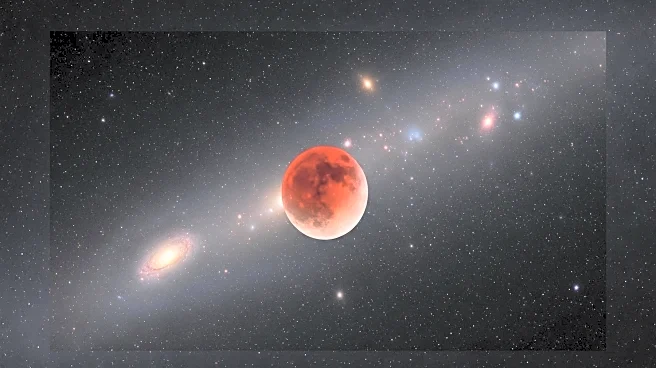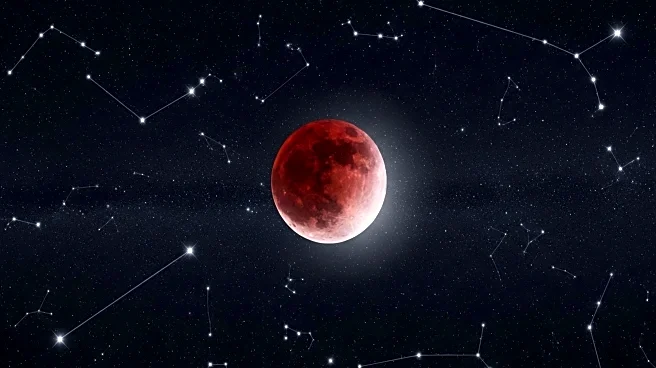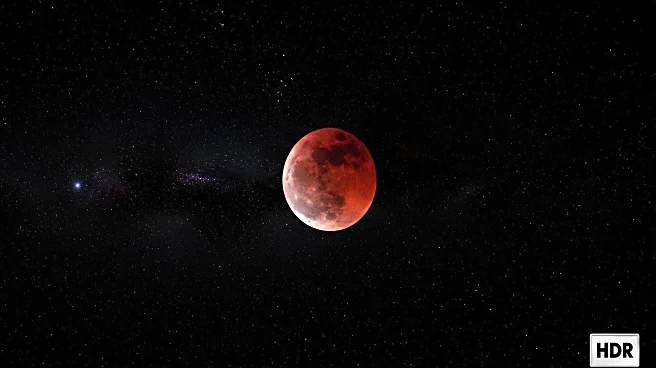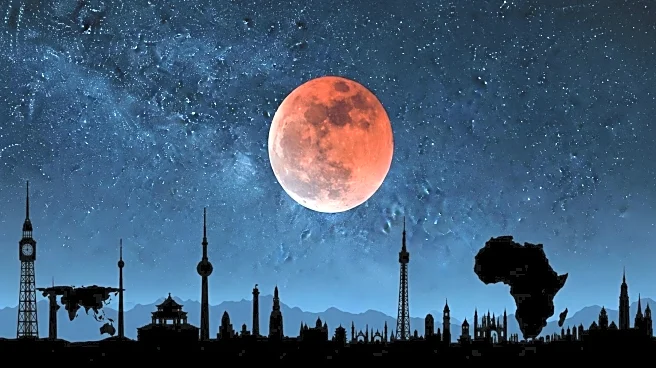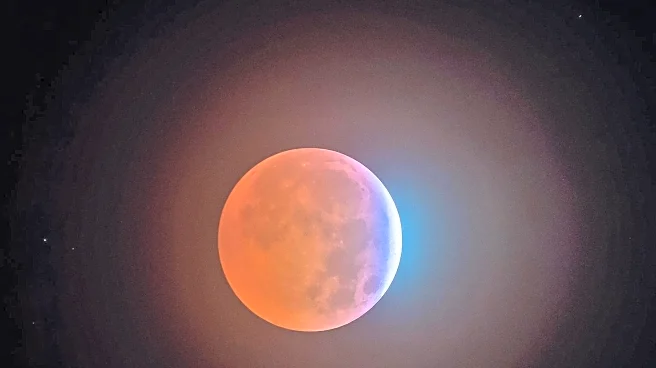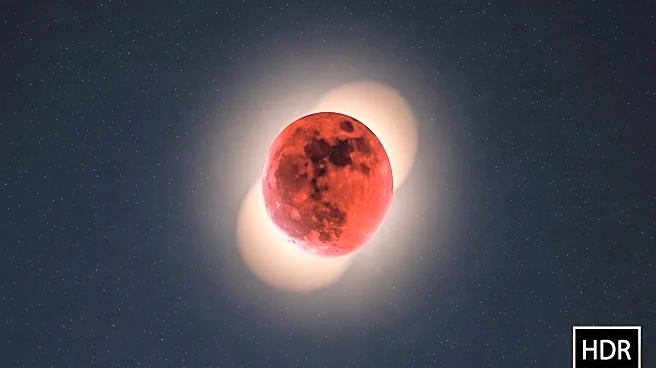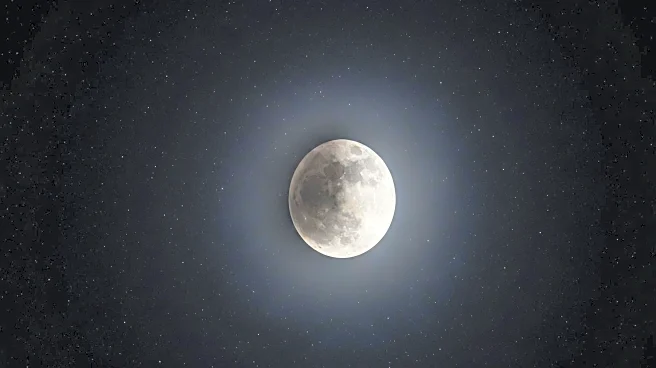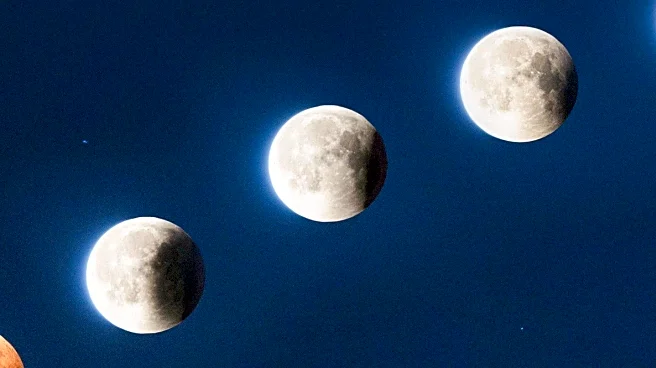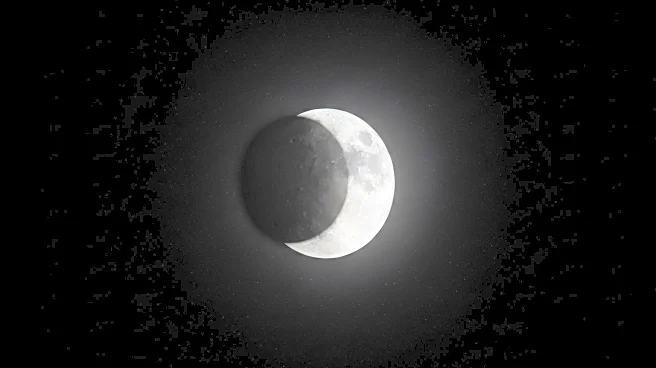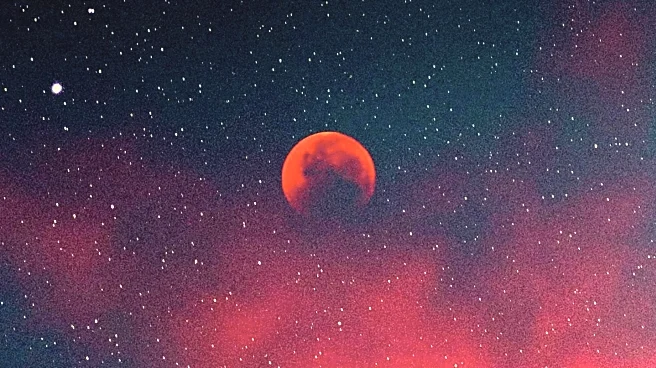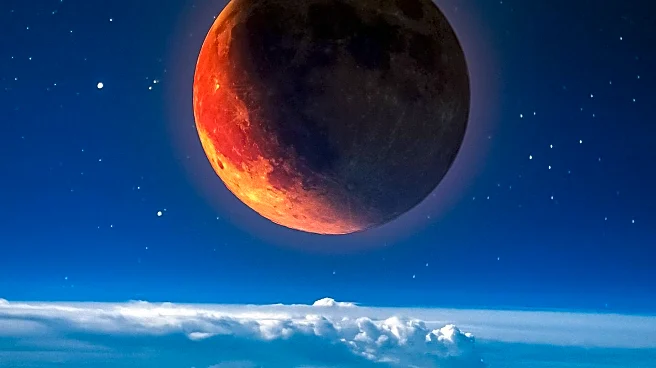What's Happening?
A total lunar eclipse is set to occur on September 7-8, 2025, during which Earth's shadow will cover the moon, resulting in a 'blood moon' phenomenon. This event happens when the Earth aligns perfectly between the sun and the moon, casting a shadow that causes the moon to appear red due to Rayleigh scattering. The eclipse will be visible to approximately 5.8 billion people across Australia, Asia, Africa, and eastern Europe. The totality phase, where the moon is fully covered, will last for 82 minutes, beginning at 1:30 p.m. ET. While the Americas will miss the event due to the moon being below the horizon, Space.com plans to host a livestream for those unable to view it directly.
Why It's Important?
The total lunar eclipse offers a unique opportunity for astronomical observation and public engagement with celestial events. It highlights the intricate orbital mechanics that allow such phenomena to occur, fostering interest in astronomy and science education. The widespread visibility of the eclipse underscores the global nature of astronomical events, uniting people across continents in a shared experience. Additionally, the event provides a chance for photographers and stargazers to capture and share images, promoting community involvement and appreciation for natural wonders.
What's Next?
As the eclipse approaches, enthusiasts are encouraged to prepare viewing locations and equipment to maximize their experience. Space.com will provide updates and a live blog to guide viewers through the event phases. The eclipse may inspire further interest in upcoming celestial events and encourage educational initiatives related to astronomy. Observers are advised to check local conditions to ensure optimal viewing and to participate in online discussions and photo-sharing platforms to connect with the global community.
Beyond the Headlines
The 'blood moon' phenomenon can spark discussions about the cultural and historical significance of lunar eclipses, which have been interpreted in various ways across different societies. The event may also lead to increased interest in the scientific principles behind atmospheric scattering and celestial mechanics. Long-term, such events can contribute to a broader understanding of Earth's place in the solar system and the dynamics of planetary motion.
